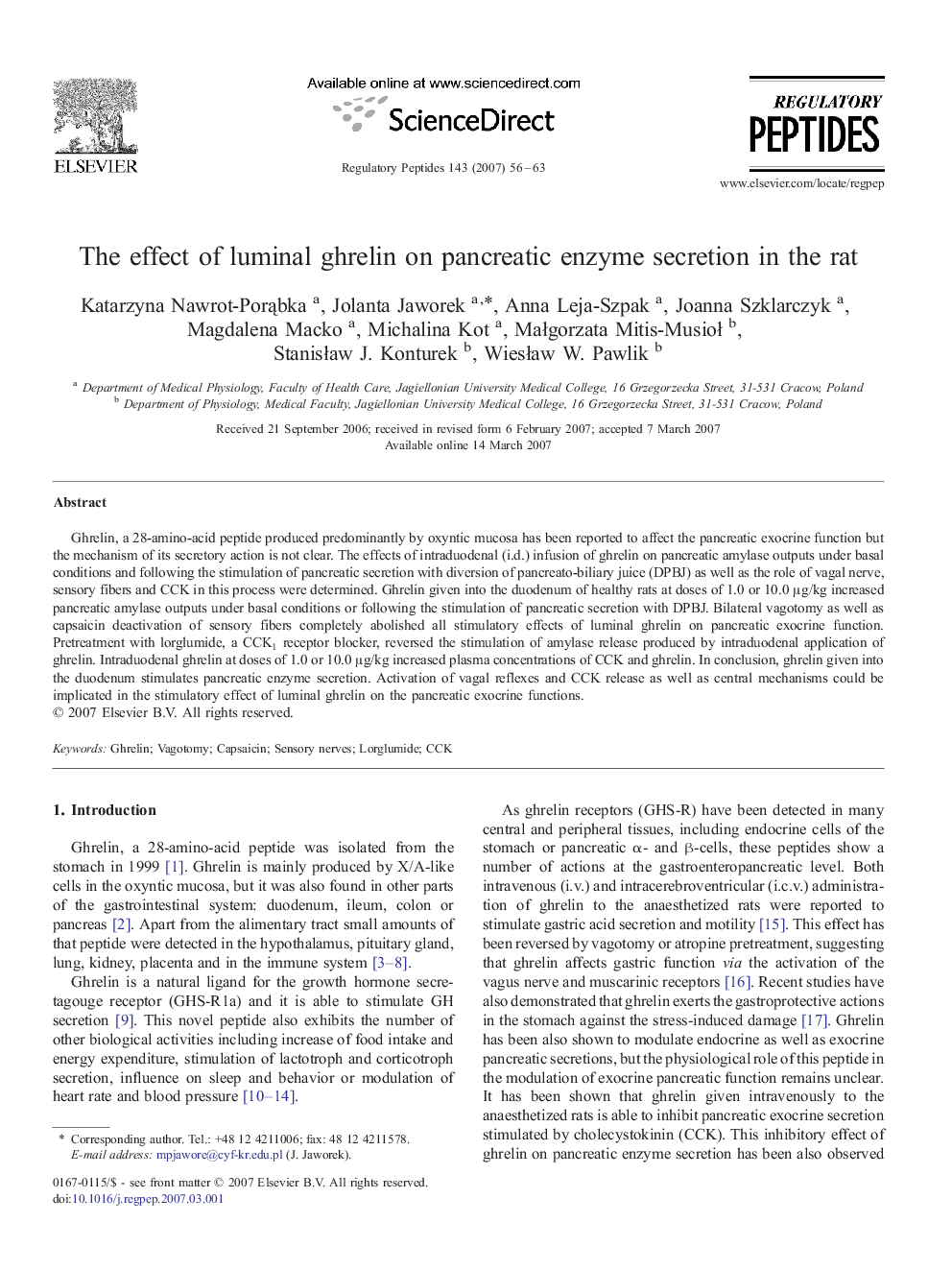| Article ID | Journal | Published Year | Pages | File Type |
|---|---|---|---|---|
| 2023199 | Regulatory Peptides | 2007 | 8 Pages |
Abstract
Ghrelin, a 28-amino-acid peptide produced predominantly by oxyntic mucosa has been reported to affect the pancreatic exocrine function but the mechanism of its secretory action is not clear. The effects of intraduodenal (i.d.) infusion of ghrelin on pancreatic amylase outputs under basal conditions and following the stimulation of pancreatic secretion with diversion of pancreato-biliary juice (DPBJ) as well as the role of vagal nerve, sensory fibers and CCK in this process were determined. Ghrelin given into the duodenum of healthy rats at doses of 1.0 or 10.0 μg/kg increased pancreatic amylase outputs under basal conditions or following the stimulation of pancreatic secretion with DPBJ. Bilateral vagotomy as well as capsaicin deactivation of sensory fibers completely abolished all stimulatory effects of luminal ghrelin on pancreatic exocrine function. Pretreatment with lorglumide, a CCK1 receptor blocker, reversed the stimulation of amylase release produced by intraduodenal application of ghrelin. Intraduodenal ghrelin at doses of 1.0 or 10.0 μg/kg increased plasma concentrations of CCK and ghrelin. In conclusion, ghrelin given into the duodenum stimulates pancreatic enzyme secretion. Activation of vagal reflexes and CCK release as well as central mechanisms could be implicated in the stimulatory effect of luminal ghrelin on the pancreatic exocrine functions.
Related Topics
Life Sciences
Biochemistry, Genetics and Molecular Biology
Biochemistry
Authors
Katarzyna Nawrot-PorÄ
bka, Jolanta Jaworek, Anna Leja-Szpak, Joanna Szklarczyk, Magdalena Macko, Michalina Kot, MaÅgorzata Mitis-MusioÅ, StanisÅaw J. Konturek, WiesÅaw W. Pawlik,
